Who was Artist Francisco Goya?
Artist Francisco Goya was a Spanish painter and considered the most important Spanish artist of the late 18th and early 19th century Western world. Drawings, engravings, and paintings by Francisco Goya reflected contemporary historical turmoils and socio-political changes. Goya is the last master from the old school of Western art, which romantically brings the drama and details of social life.
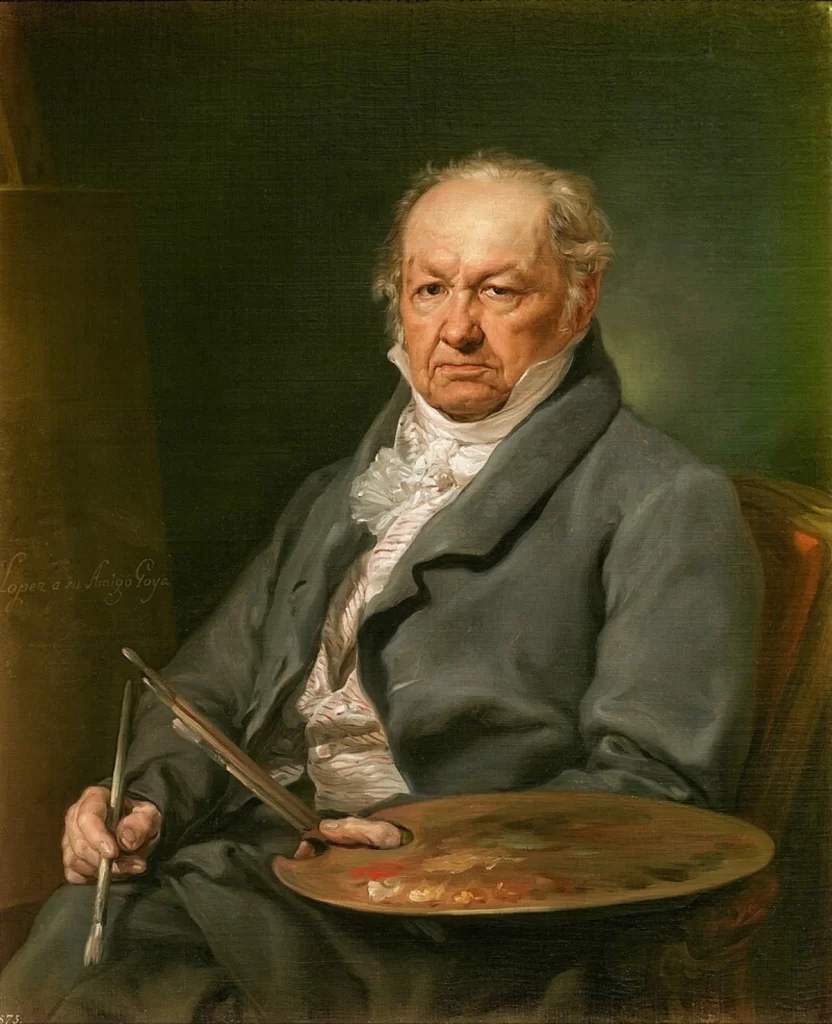
Courtesy – Museo del Prado
Born in a middle-class family and starting to paint at 14, Francisco Goya became a court painter for the Spanish Crown in 1786. He marked his early career with Spanish aristocratic patronage with enormous portraits. Paintings by Francisco Goya imitate his life. It reveals the moralistic upheavals in the Christian era, the way his painting ‘Naked Maja’ is criticised and crucified in the courtroom of the Spanish crown.
8 Famous Paintings by Francisco Goya
In his career, artist Francisco Goya painted over 700 paintings. But that’s not all, he also made over a thousand drawings and sketches. In addition, he also made 280 art prints. While the art lovers cherish all of the paintings by the Goya, we will discuss only a few.
La maja desnuda
La maja desnuda, or the Naked Maja, is the most celebrated or notorious painting by the Goya. Goya did this painting around 1797-1800, portraying nude women reclining on a bed.
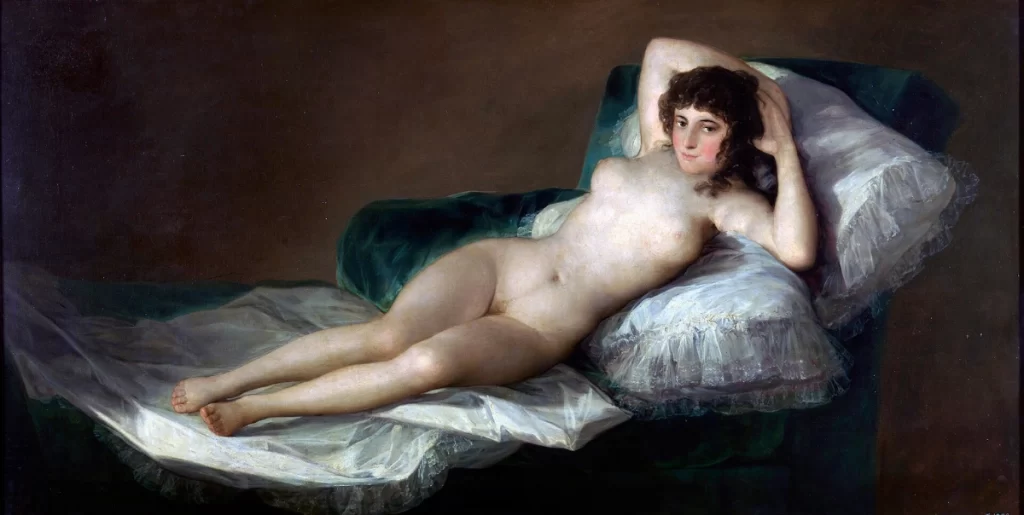
Courtesy – Wikipedia
La maja vestida
After the controversy of Naked Maja, artist Francisco Goya painted La maja vestida or ‘The Clothed Maja.’ This painting by Francisco Goya is considered to be the peak of Romanticism.
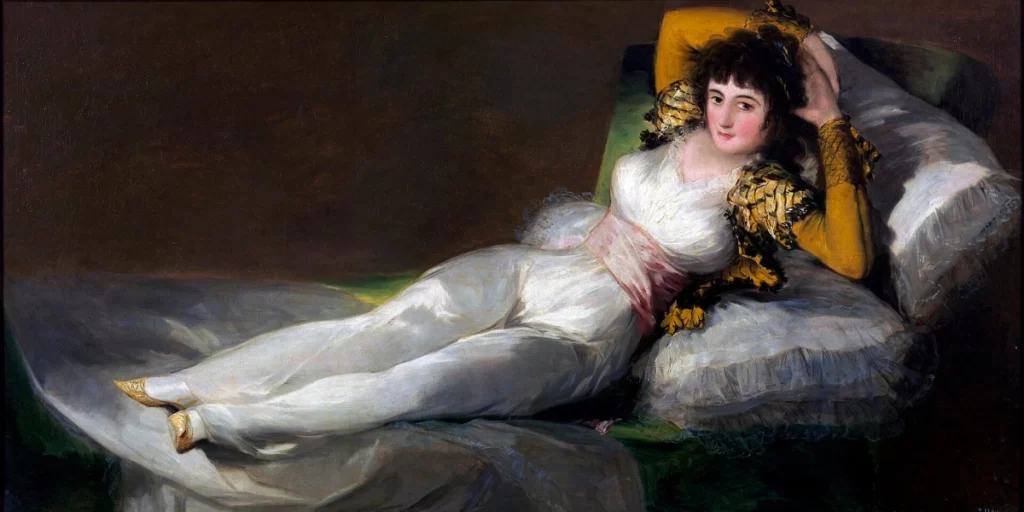
Courtesy – Wikipedia
The Third of May 1808
The Third of May 1808 depicts Spanish resistance to Napoleon’s forces during the Peninsular War occupation in 1808. This painting is groundbreaking for its content, presentation, and emotional strength. It describes the archetypal image of the horrors of war. Although it draws on many high and popular art sources, The Third of May 1808 marks a clear break from convention.
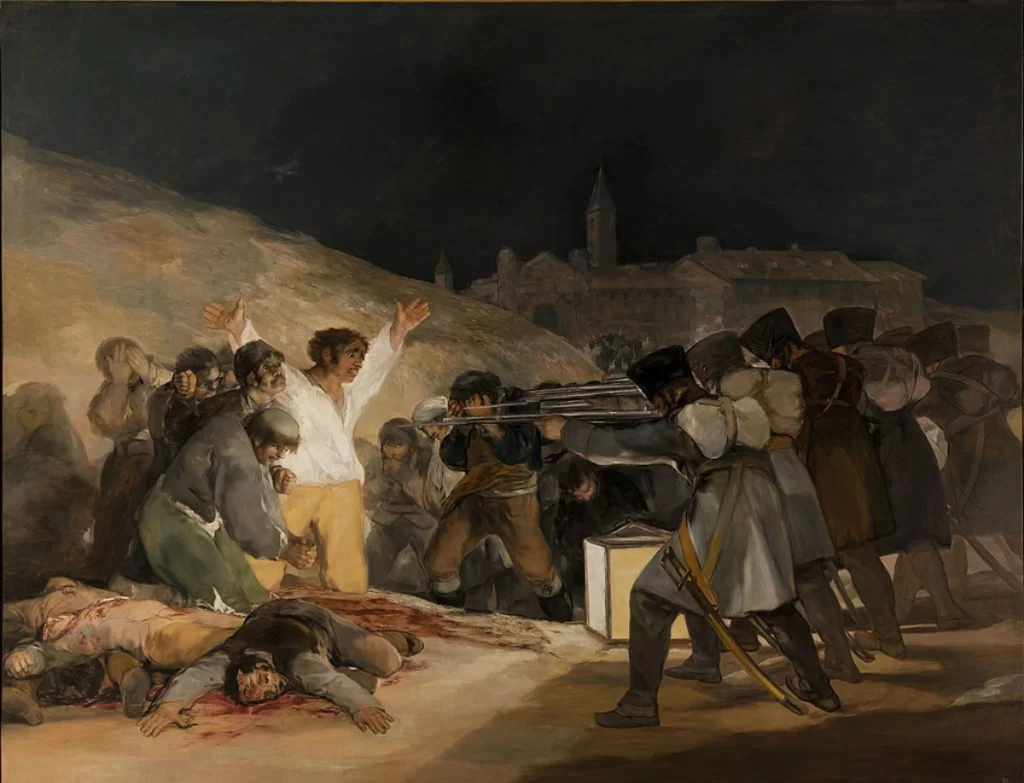
Courtesy – Wikipedia
Saturn Devouring His Son
In Saturn Devouring His Son, artist Fransisco Goya illustrates the Greek tale of the Titan Cronus (in the title Romanized to Saturn), who, fearful that one of his offspring might overthrow him, ate each of his children upon their birth.
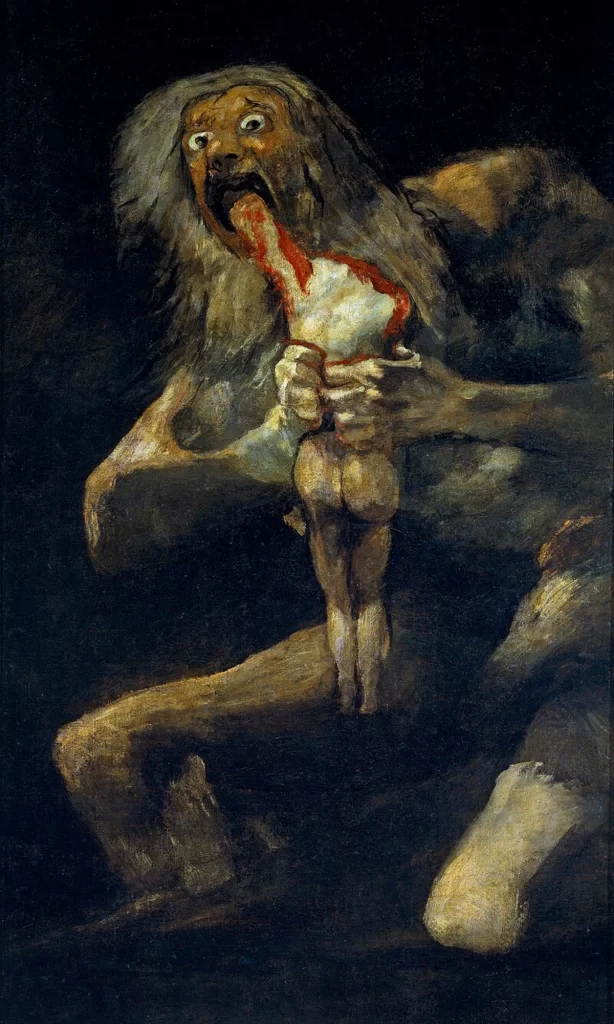
Courtesy – Wikipedia
The Second of May 1808
In ‘The Second of May 1808’, Francisco Goya depicts people’s rebellions against the French occupation of Spain that sparked the Peninsular War.
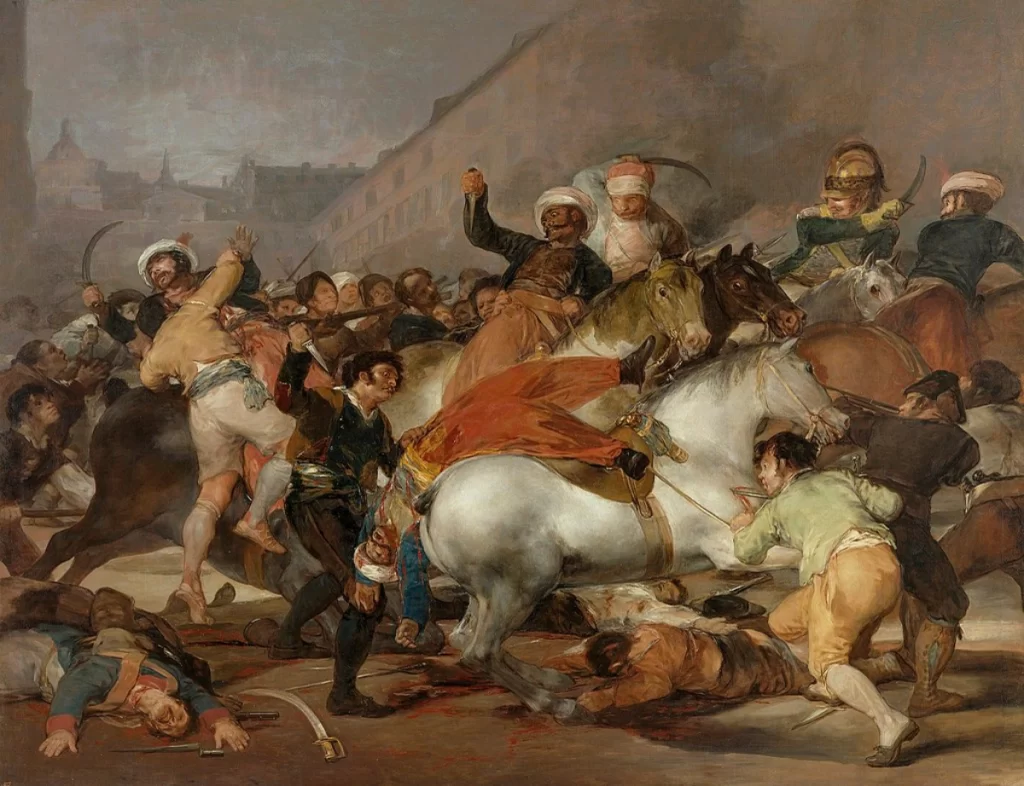
Courtesy – Wikipedia
Witches’ Sabbath
Witches Sabbath, counted as an oil mural, explores the theme of violence, intimidation, ageing and death. During this time, artist Francisco Goya lived alone and suffered from mental and physical illness, as reflected in this painting.
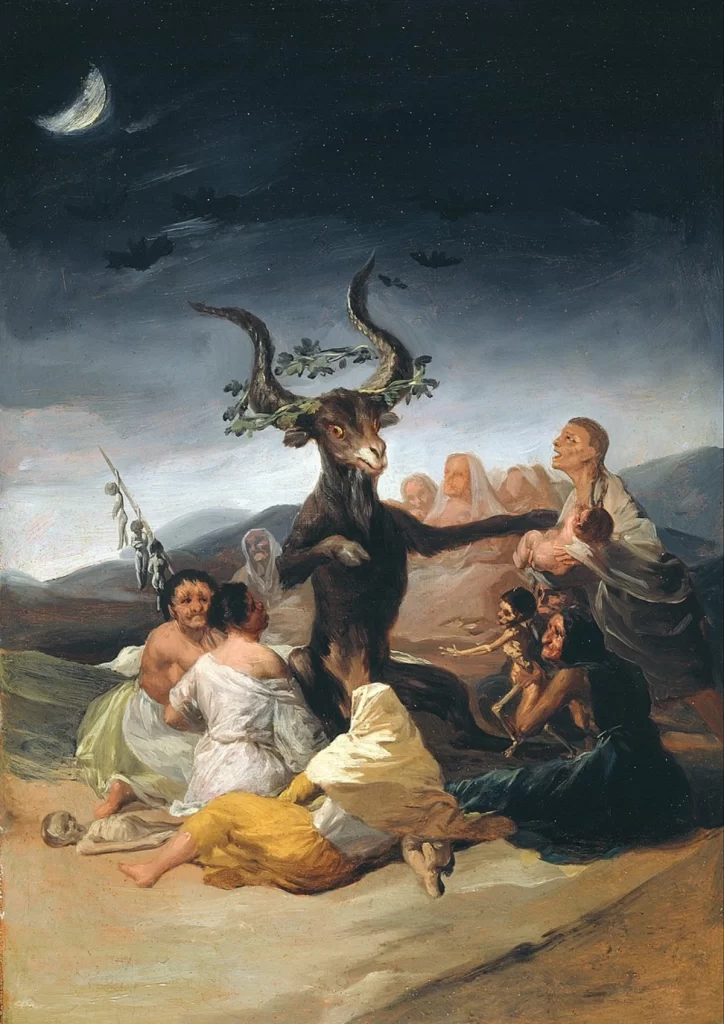
Courtesy – Wikipedia
Portrait of Manuel Godoy
Portrait of Manuel Godoy is a portrait painting of Spanish Prime Minister Manuel Godoy, commemorating his victory in the War of Oranges against Portugal. This painting by the Goya is considered a brilliant play of psychological characterisation by the artist.
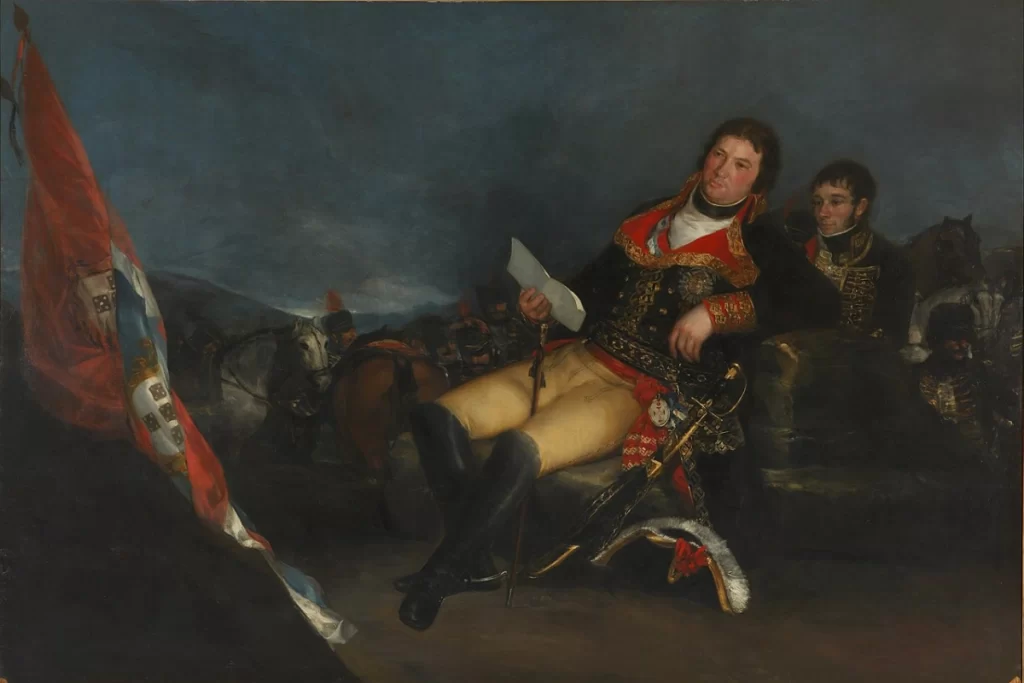
Courtesy – Wikipedia
The Colossus
The Francisco Goya artwork, The Colossus, is a painting of a Giant hiding mountains in his legs to his thighs, and clouds envelop his torso. The giant looks to be taking an aggressive stance, with one of his fists raised to shoulder height.
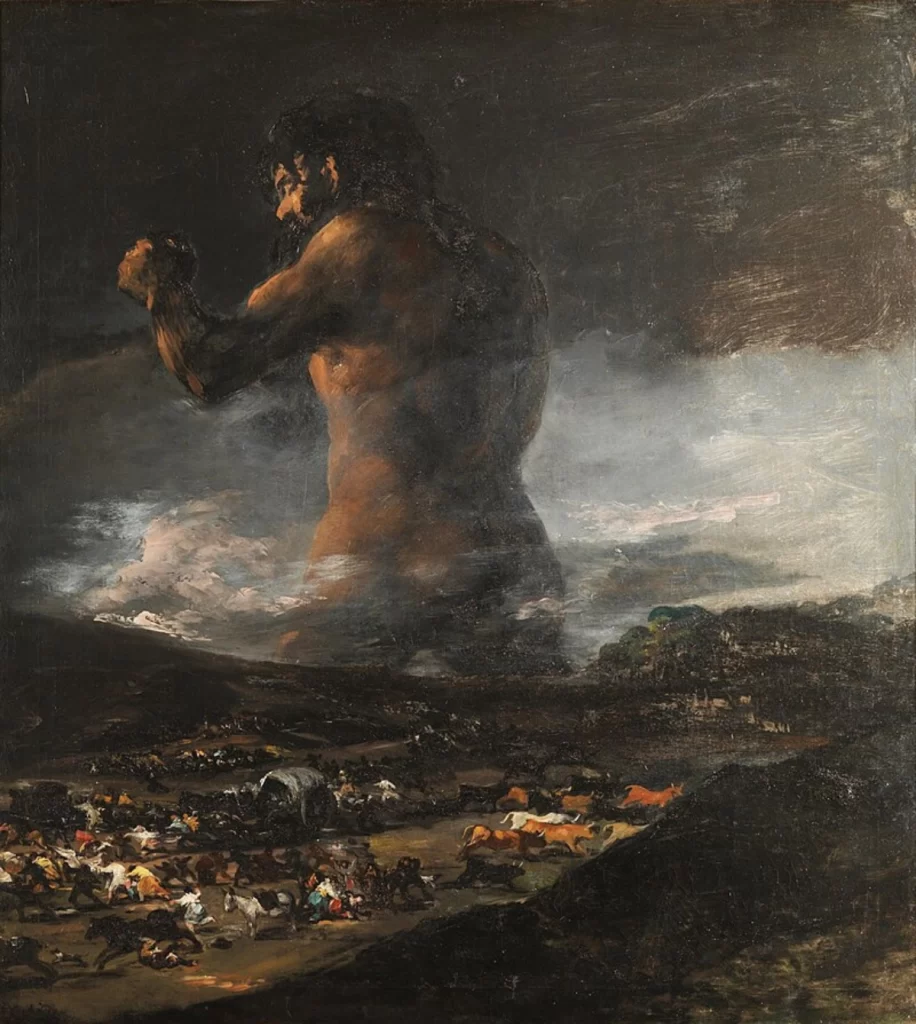
Courtesy – Wikipedia
Image – Witches’ Sabbath (The Great He-Goat) (1821-1823). Courtesy – Wikipedia





